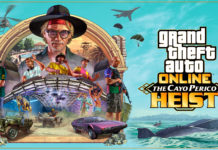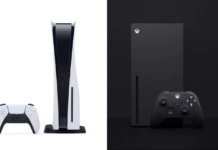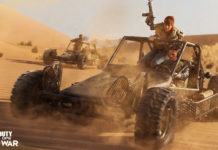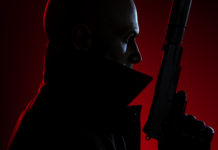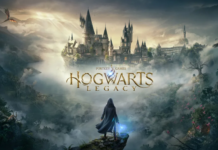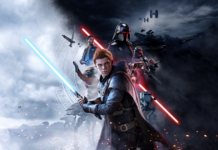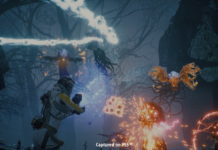
Real-Time Strategy (RTS) games have come a long way on console systems. RTS games started out on the PC where it is easy to micromanage hundreds of troops with the nimble keyboard and mouse setup. It wasn’t until this current generation of consoles that RTS games were actually playable with a controller with games like Command and Conquer and Halo Wars. It’s all thanks to developers for innovating a control method with radial wheels to order units and manage resources.
The first Supreme Commander by Gas Powered Games on the 360 was an extremely deep and ultra strategic game. The PC version it was based off of was such a hit, Gas Powered Games attempted to shoehorn every ounce of complexity into the simplified control scheme of console RTS games using radial wheel access to quickly make decisions. It made for an impressive experiment but failed since the controls couldn’t handle the game’s mechanics. Then buggy technical issues hampered down the experience to a point where it wasn’t very memorable. Supreme Commander 2 (SC2) didn’t make the same mistakes the first game did on the consoles, and Gas Powered Games wised up in crucial areas to create a smooth RTS experience that offers some true competition to the Command and Conquer franchise from EA, which has done traditionally better in the same console category.

Controls have always been a sticking point for RTS games on the consoles. Games either live or die by how well players can maintain ever expanding numbers of troops of varying specialties and abilities. SC2 opts for the popular control scheme of using a command structure based on wheels accessible with a single button and the analog sticks. What that accomplishes for RTS games on the console is it compensates for the lack of hotkeys that a computer keyboard boasts. In SC2‘s case, the complexity built into the core gamplay is readily accessible due to the control scheme being easy to execute in all situations. Of course, this isn’t a big surprise since Supreme Commander featured the same basic controls. The difference this time around is there is a more streamlined presentation, and it is overall more intuitive. The overhauling of the commander skills (think of a basic RPG leveling structure) is better designed to inform players quickly of the net benefits so they can quickly get back to the battlefield. What made controls the most appealing was how silky the technical aspects of SC2 flows with the player commands.
One of the features that best shows off the dynamic between the controls and gameplay is the way the camera is handled. There isn’t a mini-map on the HUD to clutter the screen, but SC2 allows for extreme zooming. The camera can swing all the way out to present a grid based mini-map that makes the battles look as if a spy satellite is peering from a outer space location to give a macro view and makes moving massive battalions easy. Then, in an instant, the camera can swing all the way in to the thick of a hail of bullets, lasers beams and explosions to give the player micro-command over one or a few units to position them with pinpoint accuracy. The process is smooth and doesn’t hang-up or hiccup. The option to transition between the two views in SC2 is incredibly useful and comes in to play when all the units and thousands of strategic options unfold.

There are three main factions and each army has their own flavor and specialized way of turning the tide of war. Taking advantage of the strengths of the factions while exploiting the weakness of the opponent is the heart of what SC2 strives for. It largely succeeds because the depth of how far the rock, paper, scissors approach to unit classes can be modified to alter the moment to moment gameplay. For example, players can send out a mass of tanks artillery and research technology that gives bonuses to increase the range and firepower of the basic units to make them incredibly formidable foes. On the opposite end of the spectrum, there are hulking experimental units that tower over the enemy forces. It is up to the player to decide if they want to unleash the high-tech machinery before it is entirely built and risk it failing. The powers of the experimental are cool and insanely useful, like the Bomb Bouncer that sends enemy fire right back where it came from, so deploying them early might be a necessary gamble in some situations. As the levels progress and players get more familiar with the gameplay, the strategy and complexity will develop organically with the gamer’s skill. The balance between shocking depth of gameplay and a simplified control scheme was found in SC2.
Gamers coming to SC2 from the original should know 25 years have passed since the events of the first game. It serves as a device to separate itself subtly from the first game to show progress has been made in terms of gameplay, controls and visuals. It primarily serves to showcase some new, more radical units from all sides to increase the chaos of war, like the experimentals. The graphics got a beautiful makeover to make the factions and individual units more detailed and lush. The map design in particular is eye popping with some unique settings from man-made structures to natural landscapes with otherworldly beauty. The last Supreme Commander failed to deliver on visuals and managed to still have frame rate issues so it is a relief that the developers at Gas Powered Games not only brought up the quality substantially but made it stable.

Whereas the visuals do a great job of bringing the gamer into the world of SC2, the sound work does the opposite. Industry rock star Nolan North takes the role of a human commander, but he feels throttled back from delivering a great performance. When someone who is proven of delivering captivating performances sounds like he is going through the motions, there is something fishy smelling. The poor sound design extends itself to the combat with weak gameplay sound effects and hinders the impact of the large scale encounters of opposing forces.
The Rundown
Gas Powered Games learned from their mistakes on their first PC-to-console port of an RTS game and the proof is SC2. With improved visuals, controls and gameplay, SC2 gives rivals Halo Wars and Command and Conquer a run for its money.

